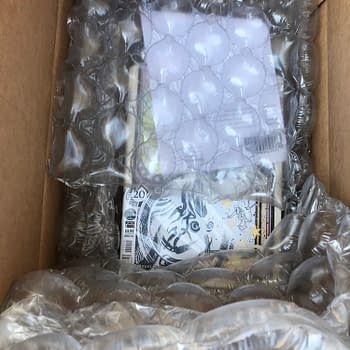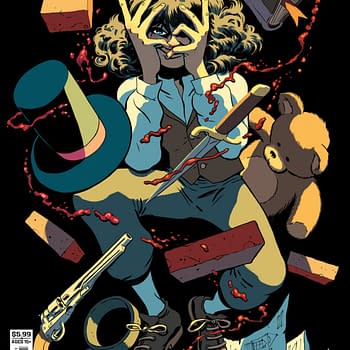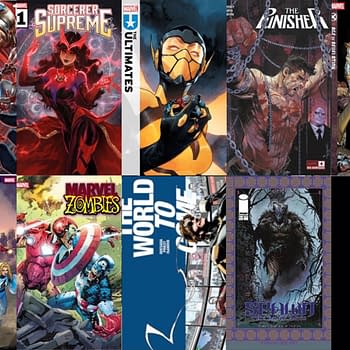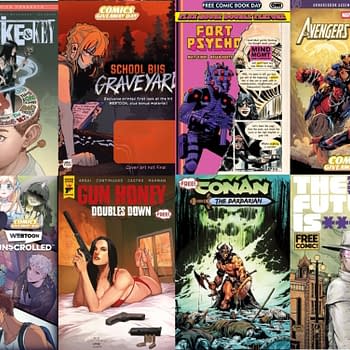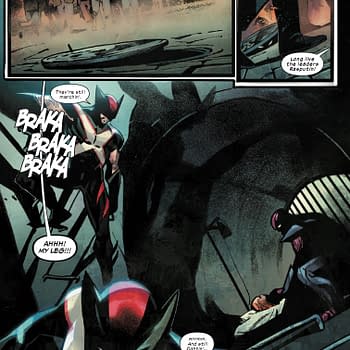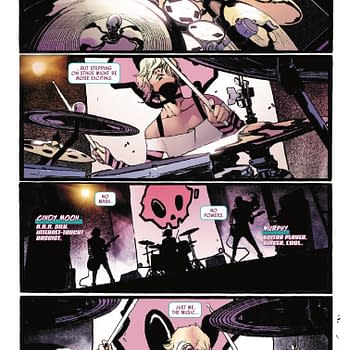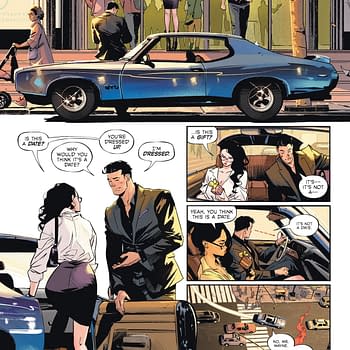Posted in: Comics | Tagged: Comics, dublin, expo
Breaking Into Comics Part Two: Pitching Professionally
Colin O' Mahoney writes for Bleeding Cool; For part one, see here.
Once you've built a reasonable portfolio of work, and are happy with your talent as a writer or artist, it's time to start pitching your work. A pitch is where you send your idea for a comic book to an editor, in the hope that they will like it enough to publish it. While pitching is an essential step in becoming a paid comic creator, it's worth remembering that professional editors see a lot of pitches every day. So it's going to have to be done correctly, and it's going to have to be very good. This is a skill to get right as soon as you can. Whether you are getting started, making a name for yourself, or you're already established, you are always pitching. Be it work for a small press publisher, for your first gig with one of the Big Two, or taking over on Amazing Spider-Man, you still have to pitch your idea for the book. Everyone working on a New 52 book for D.C. had to pitch their idea for that book. You are always pitching.
First things first: get the format right and ensure you come across as a professional. Choker and Pigs author Ben McCool helped break down the layout for a good written pitch. You should begin with a logline. A logline is the nucleus of your idea boiled down to just one or two sentences. It should be catchy. It's the first thing an editor will read, so it must grab their attention. Ben used the example of his Image book Memoir, in which the essence of the logline was: 'An entire town wakes up with no memory of anything, even who they are. With the exception of one resident.' I hadn't read Memoir, but when he read out the logline I immediately thought 'oh, that's interesting, I wonder what happens there'. Which is exactly the reaction you want from an editor. In fact, Ben was able to use the same logline in meetings with TV execs after the series was picked up for development by Warner Bros. No matter how complex your idea is, no matter how intricate and brilliant you think your story is, you need to be able to present it in one or two sentences.
Follow up the logline with one or two paragraphs detailing the main beats of your story. Finish with some brief details of your characters; where they are coming from, who they are. Show the editor why a reader would be interested in them. Feel free also to include completed script pages in your pitch, but only in addition to the above. It is important that the first page an editor reads be something like Ben suggests above. After this, they should know enough about your book to make them want to read more. If your first page isn't good enough, then no-one is going to turn the page to see what else you have included.
So what else should you include? The general consensus across the various panels was that the more you send in, the better. This does not mean you should send all 134 pages of your Superhero magnum opus, only that sending some artwork, cover concepts, or even a few pages of completed work will get you further than just scripts. If you do send completed pages, you are showing an editor a number of things. Firstly, that you understand the medium. You know how to bring a comic from script to page. Secondly, that you are at least dedicated enough to have gone this far with your book. You are showing confidence in your work. As well as this, it's easier for an editor to read 5-6 pages of comic art than just a script. Completed pages are going to have more of an impact than a script, no matter how good your writing is. Marvel Talent Manager CB Cebulski acknowledges that pitching is harder for a writer than an artist. So if you are a writer and not an artist, this is where following the advice from part one of Breaking into Comics is key: make contacts. Find people to collaborate with so you can showcase finished work, and not just typed scripts.
This brings us to advice for the artist. When you are submitting art samples, either on their own or as part of a pitch for a new book, give sequential art, not just splash pages or covers. As well as showing off your drawing talent, sequential art shows your storytelling ability. Remember that comic art isn't just pictures, it's all about storytelling. Give a minimum of six pages to allow an editor to really get a feel for your ability. Artist Stephen Mooney went even further when pitching new book Half Past Danger to publishers. He was able to showcase 26 fully lettered and pencilled pages. it was announced at D.I.C.E. that not only has the book been picked up by IDW, but he also had interest from other publishers, and was able to choose where to go with it. Bear in mind as well, that some publishers will only look at pitches that include fully inked and lettered pages. Which brings us to the final point…
It pays to do your research. Know who you are pitching to, and make sure you are following any guidelines they might have. British anthology 2000AD only accepts pitches for 4 page Future Shock stories, and as above, Image comics will only accept submissions that include copies of inked and lettered pages from the proposed book. Only sending them a written proposal won't get you anywhere. As for Marvel and DC, editors they will not even look at unsolicited pitches, so don't waste your time. For legal reasons, if you send them anything other than previously published work, they will simply hit delete. So know the submission guidelines, know the publisher, and if possible, know the editor. Find out what books they are currently editing, try and get a feel for which editor and publisher is most likely to see your work as something they would like to publish. And a nice personal cover letter isn't going to hurt your chances either.
As with part 1, this is all straightforward advice. But if you follow it, you won't go too far wrong. Next is the third and final part of this series, and covers an often-overlooked part of breaking into comics: staying there once you do break in…
Thanks again to the organisers of D.I.C.E. and all the participants in the panels over the weekend, too numerous to list here, who all gave generously of their time to help aspiring creators.







